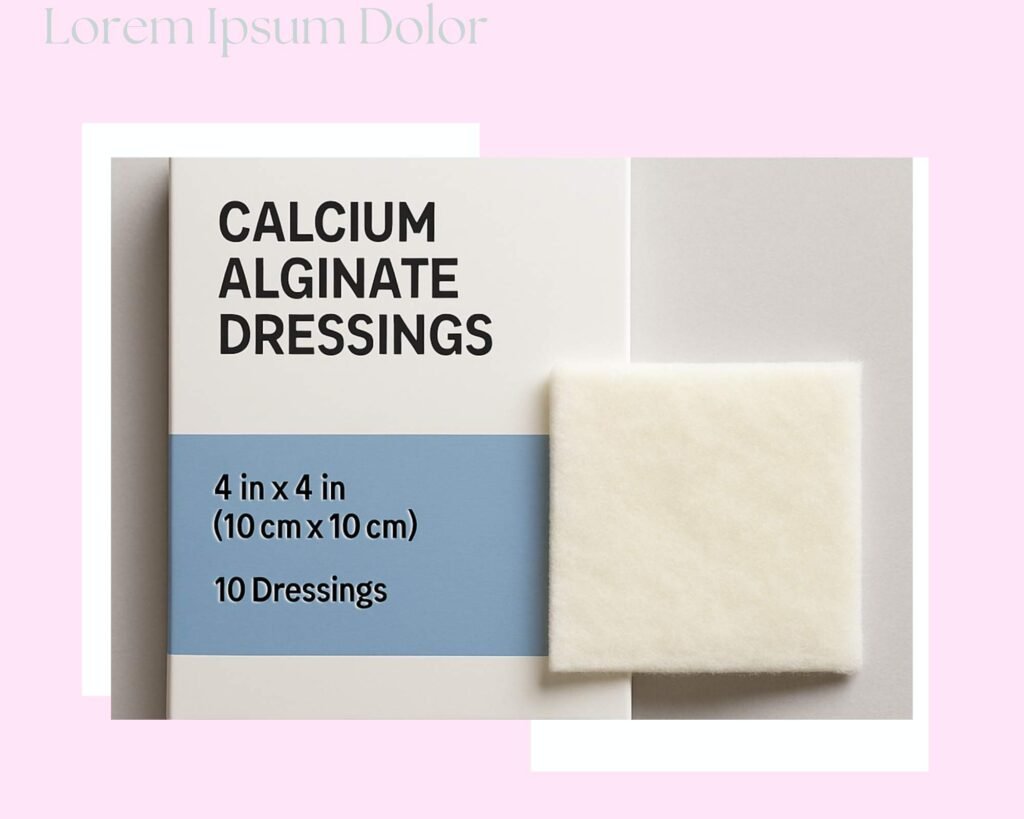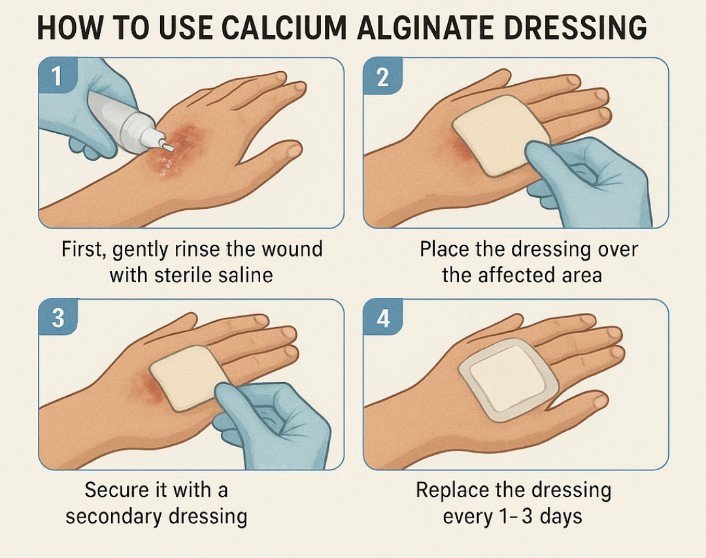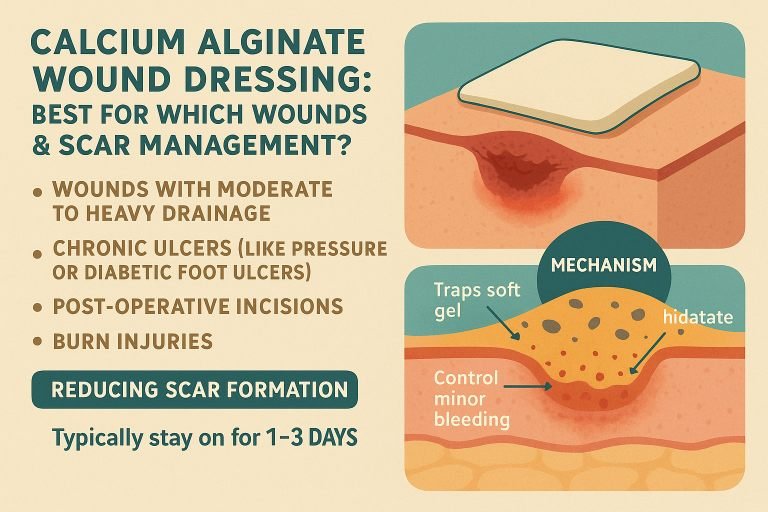
What is Calcium Alginate and Its Medical Uses?
Calcium alginate is a biocompatible substance extracted from brown seaweed, known for its gel-like texture and healing benefits. It’s widely used in wound care because it absorbs excess fluid while creating a moist environment that speeds up tissue regeneration and minimizes infection. This makes it ideal for treating burns, chronic ulcers, and surgical wounds.
Beyond medicine, calcium alginate is used in food packaging (as an edible film), pharmaceuticals (for drug delivery), and even in textiles. Its versatility, biodegradability, and safety make it a valuable material across multiple industries. Whether healing wounds or enhancing product sustainability, calcium alginate proves its worth in both healthcare and everyday applications.
An overview of what we will cover about calcium alginate.
Calcium Alginate Dressing: Uses and Medicinal Brands

Derived from natural seaweed, calcium alginate dressings come in soft, absorbent pads or rope forms that are fully biodegradable. They work exceptionally well for wounds with moderate to heavy drainage, including pressure sores, post-surgical sites, and diabetic ulcers. These dressings create an optimal moist healing environment, minimize bacterial contamination, and aid in removing dead tissue. Well-known medical brands like Kaltostat (ConvaTec), Sorbsan (Aspen Medical), Algisite M (Smith & Nephew), and Tegaderm Alginate (3M) are widely available.
How to Use Calcium Alginate Dressing
First, gently rinse the wound with sterile saline to remove debris before placing the dressing over the affected area. For deeper wounds, the alginate rope can be lightly packed into the cavity. Secure it with a secondary dressing, such as gauze or a transparent film. Replace the dressing every 1–3 days, or when it becomes saturated, to ensure effective healing.
Calcium Alginate Wound Dressing: Best for Which Wounds & Scar Management?

Calcium alginate dressings work exceptionally well for wounds with moderate to heavy drainage, including chronic ulcers (like pressure or diabetic foot ulcers), post-operative incisions, and burn injuries. They’re also beneficial for infected or slow-healing wounds because of their superior fluid absorption and ability to maintain an optimal healing environment. These dressings aid in reducing scar formation by promoting healthy tissue growth and preventing excessive dryness or irritation. Typically, they stay on for 1–3 days, depending on wound fluid levels, and are changed once saturated.
Mechanism:
When calcium alginate interacts with wound exudate, it forms a soft gel that traps bacteria, controls minor bleeding, and keeps the wound hydrated. The calcium content also supports clotting and accelerates tissue repair.
Ideal for complex or slow-healing wounds, these dressings enhance recovery while minimizing scarring.
Calcium Alginate with Silver: Key Differences and Applications

Calcium alginate with silver enhances traditional wound care by combining calcium alginate’s absorption properties with silver’s antimicrobial action. While standard calcium alginate effectively manages exudate in clean wounds, the silver-infused version provides critical infection protection for complex cases like chronic ulcers or contaminated injuries.
These two formulations serve complementary purposes in wound management. The basic calcium alginate version is optimal for routine wound maintenance, whereas the silver-containing variant becomes essential when battling or preventing infections. Clinicians may sometimes combine both – using silver alginate for microbial control while employing regular calcium alginate for continued healing support – though this requires professional oversight.
Want us to explore silver alginate in more detail? Let us know in the comments!